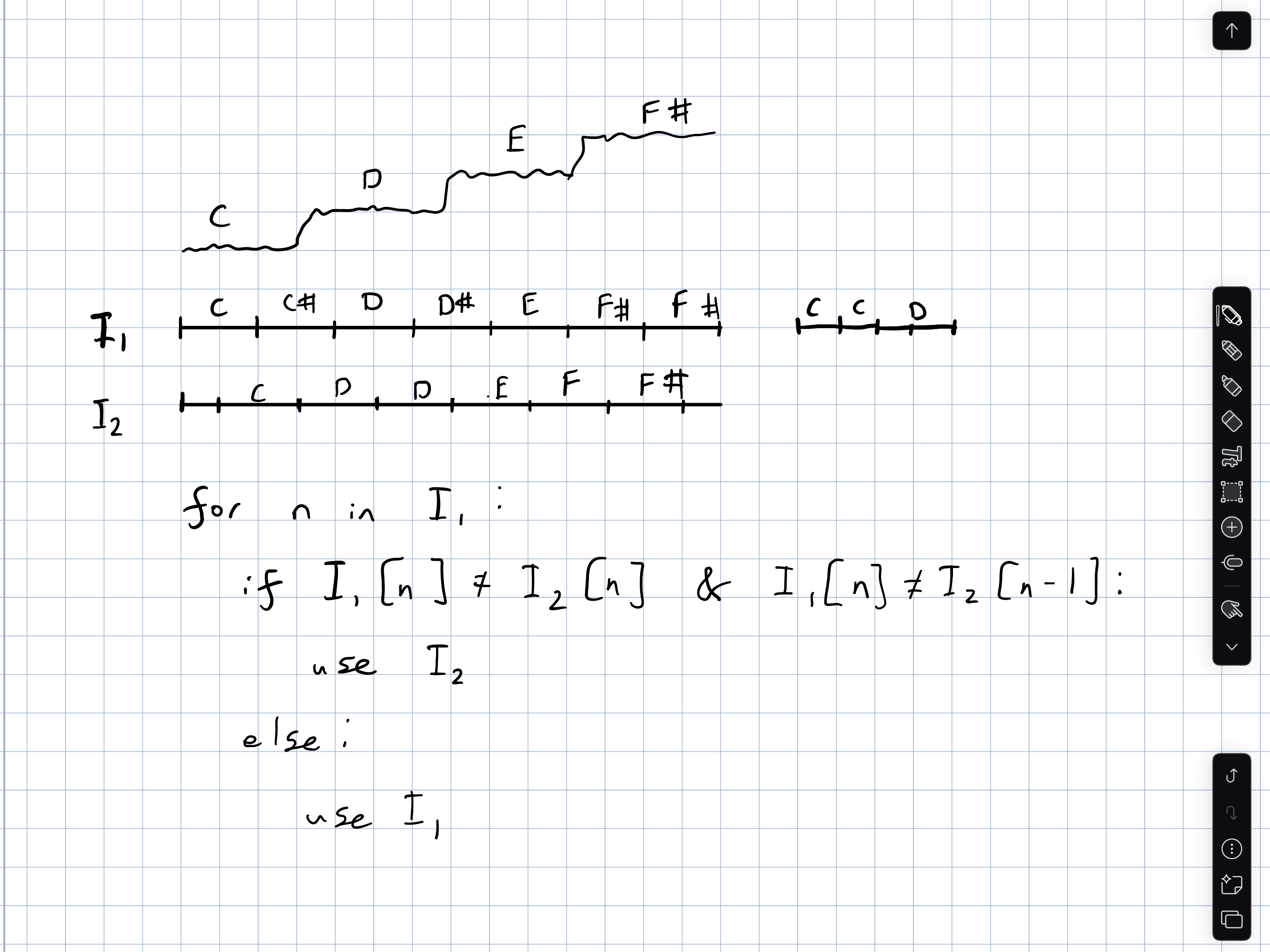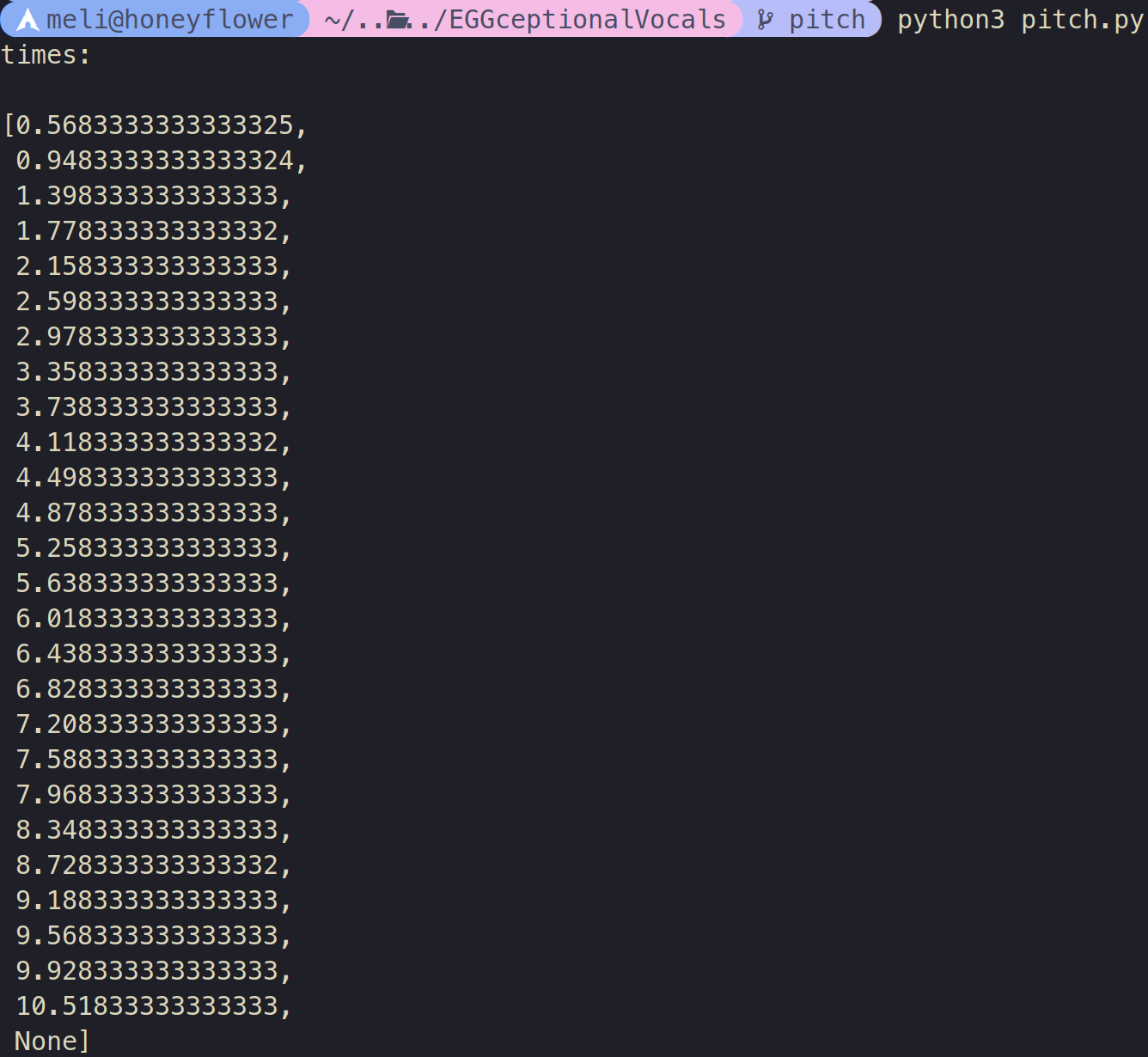Schedule
Official Project Management Schedule Updates
- IN PROGRESS BLOCKED Pitch Analysis
- COMPLETED Match Microphone Data to EGG
- IN PROGRESS Streamline Voce Vista
Personal Task Updates
- DONE Draft code for pitch analysis
- DOING Propose modification to Pitch Analysis Testing
- DOING Add normalization support to pitch analysis of vibrato
- DOING Draft code for streamlining Voce Vista
Pitch analysis is slightly behind, but very close to being done. Other that that, tasks are on-time. It is important to note that the task “Match Microphone Data to EGG” was marked complete ahead of schedule because Voce Vista already outputs the data we need for matching up time and pitch long-term, but only outputs CQ data in the short-term.
Pitch Analysis
Tyler and I collected some recordings of one of the vocalists singing scales and “Happy Birthday” in different styles (vibrato, staccato, with piano, without piano). Shortly after this, almost the whole team was feeling under the weather, so there has been some delays in getting this data uploaded to the drive. As soon as I have access to the new data, I will be able to implement the last part of pitch analysis, support for vibrato. Prof. Sullivan and I believe that if I normalize the data appropriately, I will be able to extract the fundamental frequency around which the pitch varies when a vocalist is singing vibrato. Supporting vibrato would be great for making our product useful for opera singers, who we observed to sing vibrato naturally. Even when asked to sing staccato, occasional slips into vibrato occurred, so it would be in the interest of minimizing over-self-consciousness that we provide support for vibrato in our pitch detection. My goal is to have this support complete by the next status report. A modification to pitch analysis testing was also proposed to involve the vocalists and vocal coach as described in the previous status report, “our testing would likely be modified to include having a vocalist sing a series of notes, such as “Happy Birthday” and have the vocal coach verify that that the pitch detected agrees with their perception of the pitch for 90% of the notes sung.” This proposal is awaiting feedback.
Match Microphone Data to EGG
As stated above, this task is being marked as complete and the team is instead focusing on actually extracting and exporting CQ data long-term in the same format as time and pitches. Tyler and I are working together on this, but he is taking the lead on communicating with Voce Vista support for learning how to export this data as part of his task “Integrate EGG Data”. If there is further support needed to match CQ to time stamps, this tasks would reopen.
Streamlining Voce Vista
Adding any support to streamline the use of Voce Vista would be in the interest of our product to make the analysis process easy for our users. Voce Vista does not appear to support the command line, but it has an extensive list of configurable keyboard shortcuts. These shortcuts could be conditionally triggered from a python script with the keyboard library. This week, I will add code with functions to trigger Voce Vista functionalities including opening the app and immediately recording upon startup, stopping a recording, and exporting time and pitch data to a specific folder in the repository.

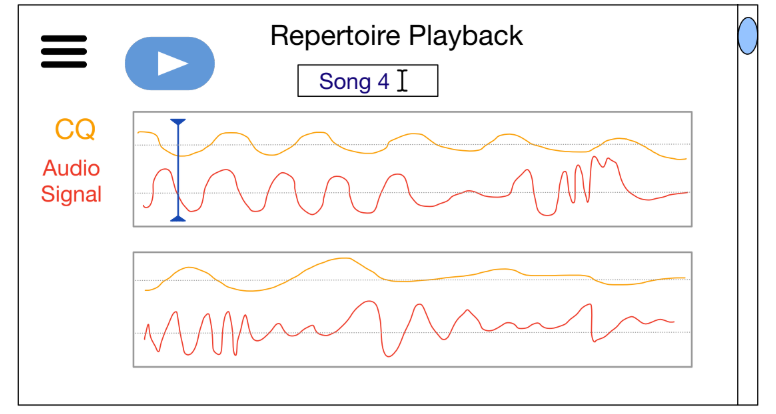


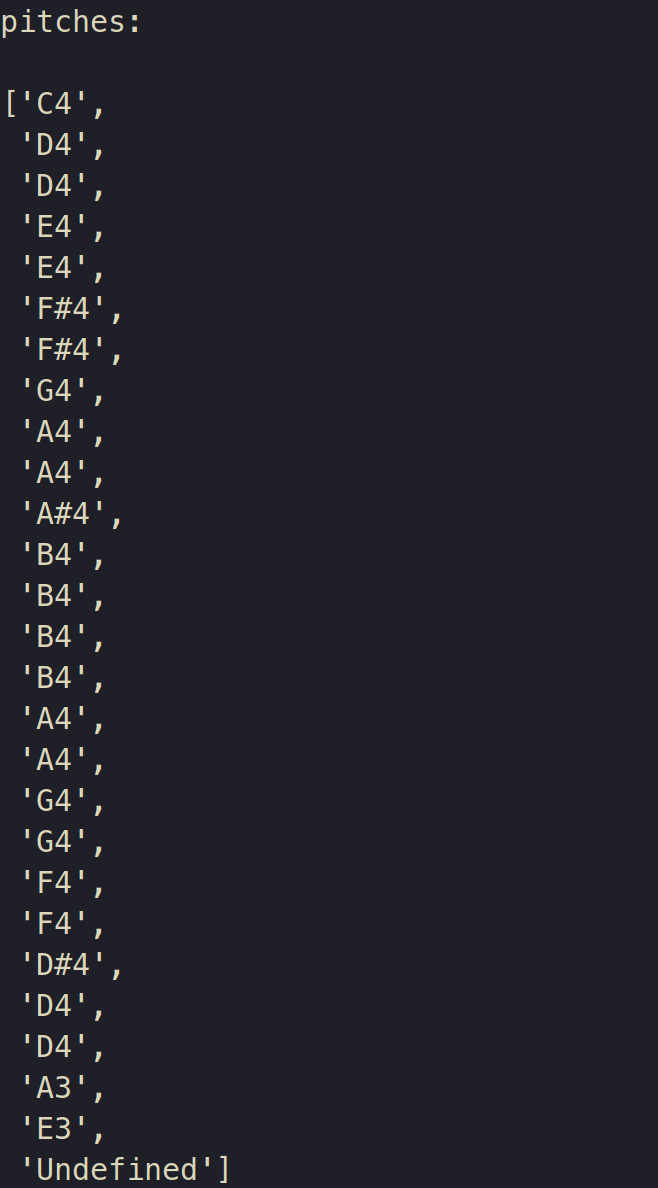



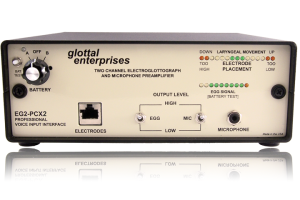 of the EGG. and in the Electrode Placement laryngeal LED it would only signal too low regardless of where we put the sensors, however the EGG Signal would have a proper display. I have emailed Professor Brancaccio, Professor Helou, and the VoceVista author Bodo Maass questions on how to address this. So far, Bodo is the only one that has responded and he said he is happy to help me troubleshoot during a VoceVista coaching session, which we will have to pay for. It might be useful to use, since I can also learn more efficient ways to transfer VoceVista data out of VoceVista into our software component as well as learn how to troubleshoot an EGG for future issues. I believe I am a little bit behind since this week I really wanted to record a lot of data with the singers to use with the EGG and microphone, and so far we only have my computer microphone data not even the Shura mic that we purchased, but it should be quick to catch back up with a short one to two hour efficient session with the singers. Outside of that, another deliverable I would like to be able to achieve is quick setups of the EGG, since right now it took me over 10 minutes to calibrate and attach everything for the EGG as well as set up Voce Vista, so a little more familiarity with everything. I would also like to start working on storing the EGG data into a more permanent and elegant solution rather than just having excel spreadsheets in a shared folder in Google Drive, and start working on a shared database to use.
of the EGG. and in the Electrode Placement laryngeal LED it would only signal too low regardless of where we put the sensors, however the EGG Signal would have a proper display. I have emailed Professor Brancaccio, Professor Helou, and the VoceVista author Bodo Maass questions on how to address this. So far, Bodo is the only one that has responded and he said he is happy to help me troubleshoot during a VoceVista coaching session, which we will have to pay for. It might be useful to use, since I can also learn more efficient ways to transfer VoceVista data out of VoceVista into our software component as well as learn how to troubleshoot an EGG for future issues. I believe I am a little bit behind since this week I really wanted to record a lot of data with the singers to use with the EGG and microphone, and so far we only have my computer microphone data not even the Shura mic that we purchased, but it should be quick to catch back up with a short one to two hour efficient session with the singers. Outside of that, another deliverable I would like to be able to achieve is quick setups of the EGG, since right now it took me over 10 minutes to calibrate and attach everything for the EGG as well as set up Voce Vista, so a little more familiarity with everything. I would also like to start working on storing the EGG data into a more permanent and elegant solution rather than just having excel spreadsheets in a shared folder in Google Drive, and start working on a shared database to use.